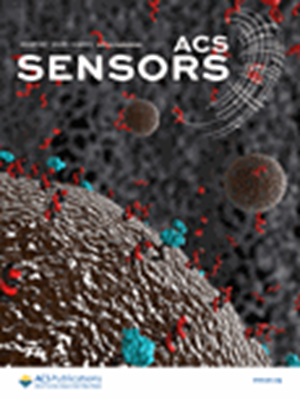Dual-Color Visualization of Hepatic Fibrosis and Multidimensional Assessment of Therapeutic Drugs by a Multifunctional Single-Molecular Fluorescent Probe
IF 8.2
1区 化学
Q1 CHEMISTRY, ANALYTICAL
引用次数: 0
Abstract
There is a high relevance between changes in ClO– levels/mitochondrial morphology and the development of hepatic fibrosis; however, the efficient tools that are capable of real-time monitoring both of them and exploring their interrelations are extremely rare. Herein, we developed a multifunctional fluorescent probe based on a “three-in-one” strategy, named Mito-XS, which is firmly anchored in mitochondria, allowing for the ratiometric detection of ClO– and the accurate analysis of mitochondrial morphology. Probe Mito-XS can sensitively capture the changes of ClO– levels in mitochondria and successfully achieve simultaneous real-time monitoring of ClO– levels and mitochondrial morphology during oxidative stress. Utilizing probe Mito-XS, the evaluations of three therapeutic drugs (silymarin, methyl ferulic acid, and puerarin) on protecting cells from CCl4-induced damage were visualized by assessing their capabilities of inhibiting ClO– levels and maintaining mitochondrial morphology. Furthermore, dual-color imaging in hepatic fibrosis mice models revealed the exacerbation of hepatic fibrosis, and the therapeutic effect of puerarin can be tracked by the fluctuation of ClO– levels. Therefore, probe Mito-XS is an effective imaging tool to monitor mitochondrial morphology and ClO– levels at the same time and has the potential to work as an evaluation tool to screen therapeutic drugs for hepatic fibrosis treatment.

求助全文
约1分钟内获得全文
求助全文
来源期刊

ACS Sensors
Chemical Engineering-Bioengineering
CiteScore
14.50
自引率
3.40%
发文量
372
期刊介绍:
ACS Sensors is a peer-reviewed research journal that focuses on the dissemination of new and original knowledge in the field of sensor science, particularly those that selectively sense chemical or biological species or processes. The journal covers a broad range of topics, including but not limited to biosensors, chemical sensors, gas sensors, intracellular sensors, single molecule sensors, cell chips, and microfluidic devices. It aims to publish articles that address conceptual advances in sensing technology applicable to various types of analytes or application papers that report on the use of existing sensing concepts in new ways or for new analytes.
 求助内容:
求助内容: 应助结果提醒方式:
应助结果提醒方式:


